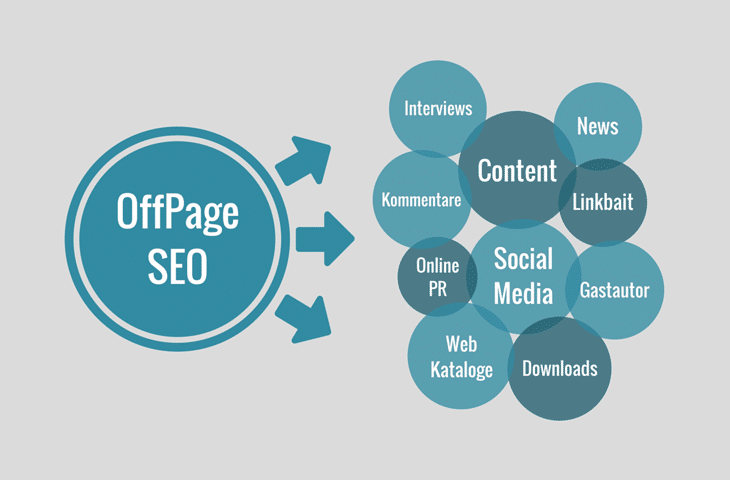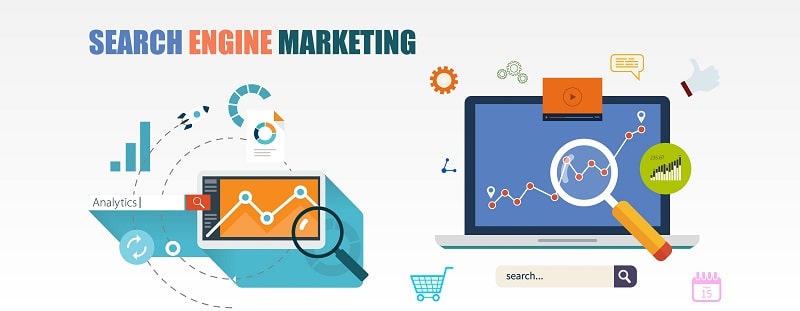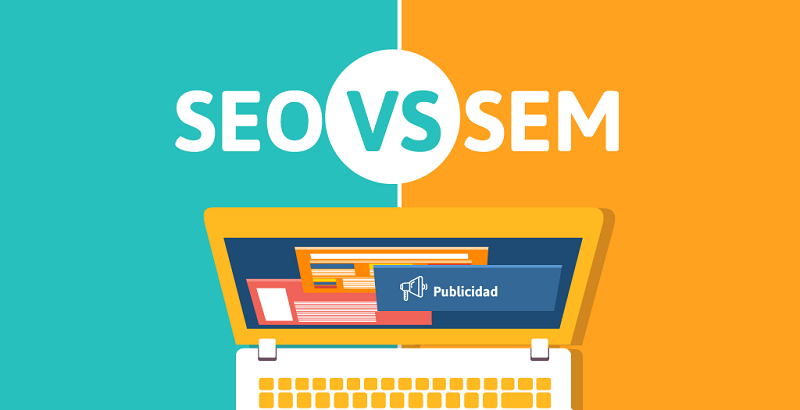SEO is already a complicated subject, and some people get even more confused when they also hear about SEM. To shed some light on this topic, today we are going to learn what is the difference between SEO and SEM and how can you tell them apart.
What Is SEO?
SEO stands for Search Engine Optimization and it aims to optimize your website. The goal here is to get free traffic from the search engines by placing the site high on the list of results given by a search engine, usually Google. It’s a very dynamic industry and discipline, since it is continuously changing to keep up with Google’s algorithms.
There are two SEO components:
1. On-Page SEO

This refers to the rules that apply to a website or a blog so that it can be search engine friendly. Some examples of the actions included in this category are:
- Incorporating Google authorship;
- Writing and optimizing blog posts and page copy;
- Incorporating keywords naturally into headings, tags, meta descriptions, etc.;
- Cleaning and formatting the page URLs;
- Integrating social media sharing with your content;
- Optimizing the page load times, etc.
2. Off-Page SEO

This is the process that aims to gets votes from other websites online. In this way, you can increase your website’s trust in what concerns the search engines. This can be quite a confusing concept, but try to envision it as a ranking system. The website that gets the most votes has the highest rank. In our case, the votes represent the links that come from other websites. For this reason, off-page SEO is also called link building. Here you have a couple of examples:
- Signals for social sharing;
- Creating a backlink profile naturally;
- Social bookmarking (on networks such as Reddit or StumbleUpon), etc.
What Is SEM?

SEM comes from Search Engine Marketing and it goes beyond SEO. It’s the marketing process that aims to get more visibility in the search engines. It does so either through free traffic (SEO), as we mentioned earlier, or through the paid one. As you can see, it includes SEO, but it comprises other strategies and tactics as well.
Paid search advertising means that you buy advertising space in the results of the search engine. As such, instead of trying to get a higher rank and free traffic, you pay, and you’ll appear right in front of the searches. The most popular advertising agency for PSA (paid search advertising) is Google AdWords. With it, you will pay only for the clicks on your ads. That’s why the entire process is called PPC (Pay-Per-Click). There are similar systems set in place by Yahoo! and Bing, but they’re not so popular.
Some examples of SEM activities are:
- Creating ad groups for the target keywords;
- Launching ad campaigns;
- Setting an ad budget;
- Writing quality, relevant ad copy with the keywords;
- Monitoring metrics 9impressions, clicks, average cost-per-click, click through rates), etc.
What Is the Difference between SEO and SEM?
Now that you are a little more familiar with the terms, we can delve on what is the difference between SEO and SEM. As you might have already noticed, the main difference is the fact that SEO is a mere component of the SEM. As such, you should never confuse or use the terms interchangeably. Even though they work together to improve a site, we are talking about different things.
What Kind of Results Do They Produce?
Besides the main difference we mentioned above, it’s important to think about the results they offer as well. SEO relies on organic search results, like those returned by Google, Yahoo!, Bing, etc., which aren’t considered ads. This also includes local mapping. On the other hand, paid search refers to a bidding system. The advertiser who pays the most gets the best ad placement. Every time a user clicks on the ad, they are charged a fee. Therefore, they are different and it’s important to look at the results as well.
A simple comparison would be the one with fishing. With SEO, you drop a net in a river in the general areas where fish might be jumping. Meanwhile, SEM is more like dropping your bait in certain spots where you heard there was fish. Both these strategies work and bring you fish, but they don’t use the same methods.
Why Is It Important?
There are two things you should consider when thinking about the difference between SEO and SEM:
1. The Impact on the Results
Just as we said, both strategies have good results. However, you should know exactly what they consist of. Otherwise, you might end up expecting quick results from an SEO campaign or long-term results for a paid search one without investing enough. Depending on your needs, it’s better to use SEO for branded keywords, and paid search for one-off ad campaigns, for example. As such, they way in which you employ them matters a lot for the results you will get.
2. Impact on the People You Hire
If you’re putting up an ad that you are looking for an SEO specialist, but use SEM terminology instead, you will find lots of applicants with more experience in paid search than SEO. At the same time, there is also the chance of finding an SEO expert that has experience in paid search as well. However, it’s not recommended to have a person take care of both aspects. If you want to obtain the best results, simply focus on one or the other, depending on your needs.
Summing Up
To sum it up, SEO and SEM take care of boosting your website and getting more visitors (and profit). What you need to remember is that SEO is part of the SEM, and the latter takes care of the paid search options. If you’re not good with this, a good option would be to ask for help from a professional. There are plenty of specialized agencies that can help you grow a website from scratch. However, if you decide to do it yourself, you need to be well informed about all the aspects.

